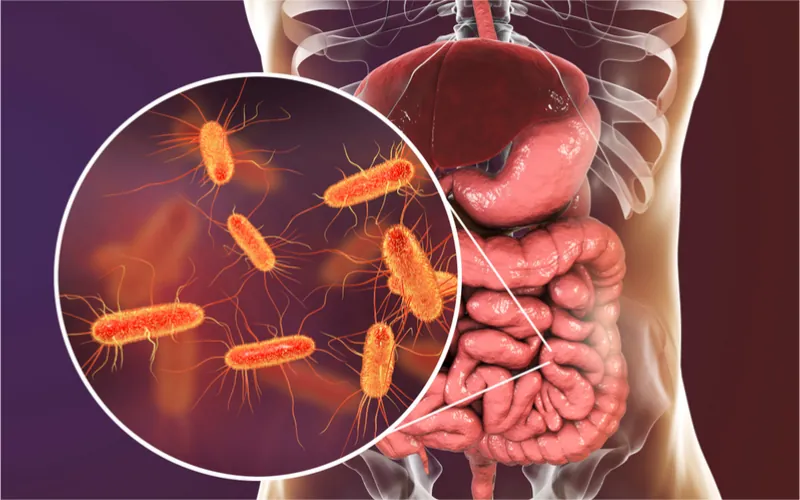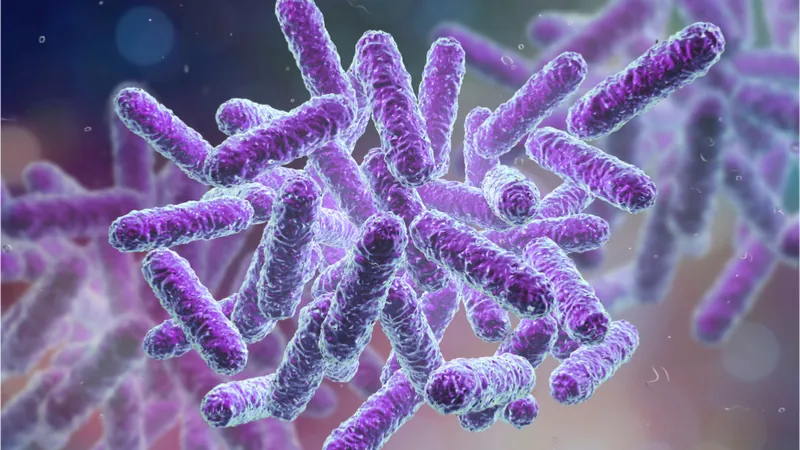In recent years, there has been evidence that the gut microbiota plays an important role in the development of Alzheimer’s disease. Certainly, there is evidence that there is a bacterial element in some cases of Alzheimer’s disease, and a new study further reinforces this link.

Read More
The researchers of this new study have shown a correlation, in humans, between populations of harmful bacteria in the gut microbiome and the development of the amyloid plaques in the brain seen in Alzheimer’s disease [1].
The research suggests that certain harmful bacteria present in the gut microbiome produce proteins that appear to modify the interaction between the immune and nervous systems and contribute to the development of Alzheimer’s disease.
The research team of one of the study authors, Giovanni Frisoni, director of the HUG Memory Centre and professor at the Department of Rehabilitation and Geriatrics of the UNIGE Faculty of Medicine, previously showed that the gut microbiota of Alzheimer’s patients is different from the microbiota of people who do not have the disease. They showed that the microbiotal diversity in these patients was altered, with certain populations of bacteria increasing in numbers while others fell.
They also previously showed a link between inflammatory signals in the blood, the elevated presence of certain types of gut bacteria, and Alzheimer’s disease. This led the researchers of this new study to try to find out if those inflammatory signals in the blood were acting as a go-between for the gut microbiota and the brain.
It is already known that the bacteria in the gut can communicate with and change how the immune system functions, which, in turn, alters interactions between the immune and nervous systems. These interactions, when harmful, can support neurodegeneration and the onset of conditions such as Alzheimer’s disease.
As a case in point, lipopolysaccharides, proteins present on the membranes of bacteria, are known to have proinflammatory properties and have been observed in and around the amyloid plaques and blood vessels of people with Alzheimer’s disease.
Gut bacteria can also interact with our metabolism through the production of short-chain fatty acids. Some short-chain fatty acids, such as butyrate, have been shown to have beneficial neuroprotective and anti-inflammatory properties, and in the case of butyrate, there is murine evidence that supplementing the loss of this particular short-chain fatty acid improves health. On the other hand, some short-chain fatty acids may have a harmful influence on metabolism and brain health.
Looking for the link
Knowing that interactions like this happen, the researchers investigated to see if inflammatory signals and other molecules from gut bacteria were linked to the onset of amyloid pathology. For the study, they enrolled a group of 89 participants aged between 65 and 85 years old, some with Alzheimer’s disease or other age-related neurodegenerative disorders.
They examined each participant using PET imaging and noted the presence of amyloid. Next, they took blood samples and examined the presence of inflammatory biomarkers and other proteins known to be produced by gut bacteria, which included lipopolysaccharides and short-chain fatty acids.
They found that there was a very strong correlation between some of these biomarkers and bacteria-produced proteins and the amount of amyloid plaque present in the brains of the study participants. The data showed that high levels of lipopolysaccharides in the blood were linked to large amyloid plaques in the brain.
The same was also true for the short-chain fatty acids acetate and valerate, whose elevated presence was associated with larger plaque deposits. However, high levels of butyrate were linked to reduced amyloid plaques.
The researchers now plan to identify the specific bacteria in the microbiota in order to ascertain which ones are responsible for promoting amyloid formation via the bloodstream.
We also discussed this paper with Dr. Michael Lustgarten, a microbiota expert from Tufts University, Boston. We also recommend checking out his YouTube channel for more microbiome information.
Metagenomic data support an association between certain bacterial strains and Alzheimer’s disease (AD), but their functional dynamics remain elusive. Objective:To investigate the association between amyloid pathology, bacterial products such as lipopolysaccharide (LPS) and short chain fatty acids (SCFAs: acetate, valerate, butyrate), inflammatory mediators, and markers of endothelial dysfunction in AD. Methods:Eighty-nine older persons with cognitive performance from normal to dementia underwent florbetapir amyloid PET and blood collection. Brain amyloidosis was measured with standardized uptake value ratio versus cerebellum. Blood levels of LPS were measured by ELISA, SCFAs by mass spectrometry, cytokines by using real-time PCR, and biomarkers of endothelial dysfunction by flow cytometry. We investigated the association between the variables listed above with Spearman’s rank test. Results:Amyloid SUVR uptake was positively associated with blood LPS (rho≥0.32, p≤0.006), acetate and valerate (rho≥0.45, p < 0.001), pro-inflammatory cytokines (rho≥0.25, p≤0.012), and biomarkers of endothelial dysfunction (rho≥0.25, p≤0.042). In contrast, it was negatively correlated with butyrate (rho≤–0.42, p≤0.020) and the anti-inflammatory cytokine IL10 (rho≤–0.26, p≤0.009). Endothelial dysfunction was positively associated with pro-inflammatory cytokines, acetate and valerate (rho≥0.25, p≤0.045) and negatively with butyrate and IL10 levels (rho≤–0.25, p≤0.038).
We report a novel association between gut microbiota-related products and systemic inflammation with brain amyloidosis via endothelial dysfunction, suggesting that SCFAs and LPS represent candidate pathophysiologic links between the gut microbiota and AD pathology.
Conclusion
The association between the gut microbiota and the formation of amyloid plaques seems pretty clear from this data.
The results also suggest that butyrate produced by gut bacteria from plant fiber, and potentially butyrate supplementation, could be a way to support brain health, as mouse studies have shown.
Literature
[1] Marizzoni, M., Cattaneo, A., Mirabelli, P., Festari, C., Lopizzo, N., Nicolosi, V., … & Coppola, L. (2020). Short-chain fatty acids and lipopolysaccharide as mediators between gut dysbiosis and amyloid pathology in Alzheimer’s Disease. Journal of Alzheimer’s Disease, (Preprint), 1-15.




